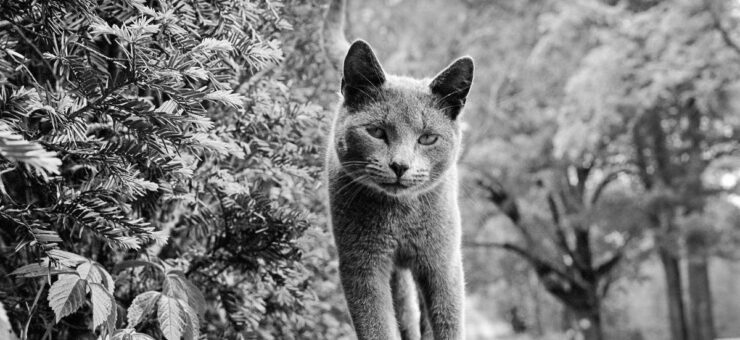When colored photos became the norm, black-and-white photography was initially considered bland and old-fashioned. After all, why would one limit themselves to varying shades of gray when they had the entire color spectrum at their disposal?
Yet, monochromatic photos eventually made a strong resurgence. That’s because, in many instances, these photos look even more captivating and stunning than their color equivalent. Color can be a distraction from the core story a photo tells us. Removing it helps draw the viewer’s focus on the subject and emotion of the image.
Black-and-white photos can deliver a strong image that would otherwise look weak and average in color. When the attachment of color is eliminated, qualities like shadow, light, texture, and pattern are accentuated breathtakingly.
In a sense, black-and-white photography eliminates time from the equation. You can compare an image from the 1940s and one shot today without feeling a gulf in time, except for changes in technology and style.
Black and White Photography Tips
The following are vital tips for creating memorable black-and-white photos.
Watch Black and White Movies
Early movies were produced in black and white. Many films from the 30s, 40s, and 50s are available on YouTube. Producers at the time didn’t have the luxury of using color to draw the viewer’s attention. Instead, they had to rely on varying lighting and shades to get their message across.
Love, hate, jealousy, admiration, depression, and elation were all narrated using light. If you are just getting started on black and white photography, these old movies are a quick way to understand what works and what doesn’t. Explore, learn and incorporate these techniques into your own photos.
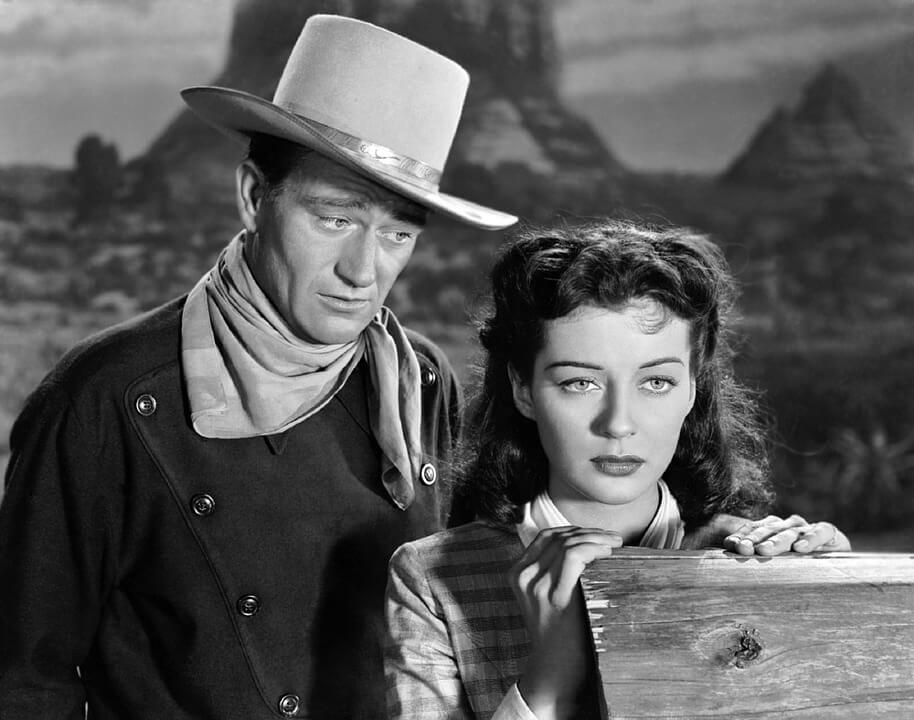
Choose the Right Equipment
Digital cameras replaced film cameras for nearly two decades and dominated the photography industry. With the advent of affordable smartphones and tablets featuring increasingly good-quality inbuilt cameras, many enthusiasts have found a convenient tool for their hobby.
There isn’t a perfect choice regarding cameras; it depends on personal preference and intended purpose. Hobbyists will probably be happy to settle for a decent phone camera. However, if you are going into black-and-white photography for professional reasons or are interested in commercial-quality shots, you’ll require a higher-end camera.
Pay attention to lenses and filters when choosing a camera. A good monochromatic photo heavily relies on sharp contrast and tonality. You’ll need a lens that can capture these attributes.
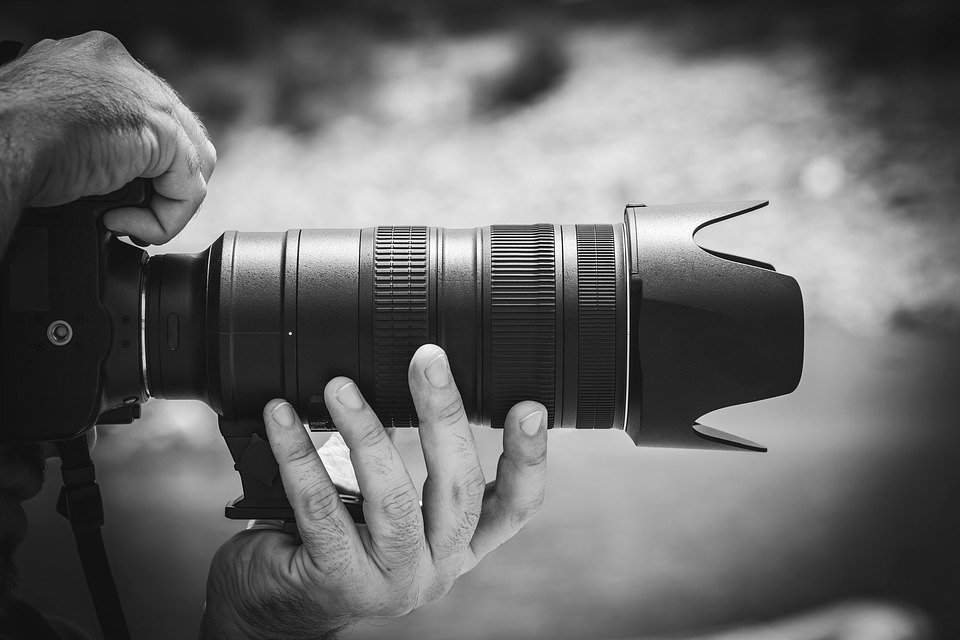
Where’s the Light?
Few things play as important a role in the quality of a photo as the light. To set the stage for an exceptional black-and-white picture, start with looking for finding and understanding the light.
If you’re relying on natural light, you’ll sometimes have to be patient and wait for the elements to align perfectly. When that moment arrives, take multiple shots. You won’t always know which specific image was outstanding at the time; it’ll only become apparent later on as you work on identifying the best one.
Remember that not all light, especially natural light, is equal in photography. Generally, avoid taking black-and-white shots when the sun is at its brightest. Excessive lighting obscures detail and washes out the images. You are more likely to have a beautiful photo in the early morning, late afternoon, or on overcast days.
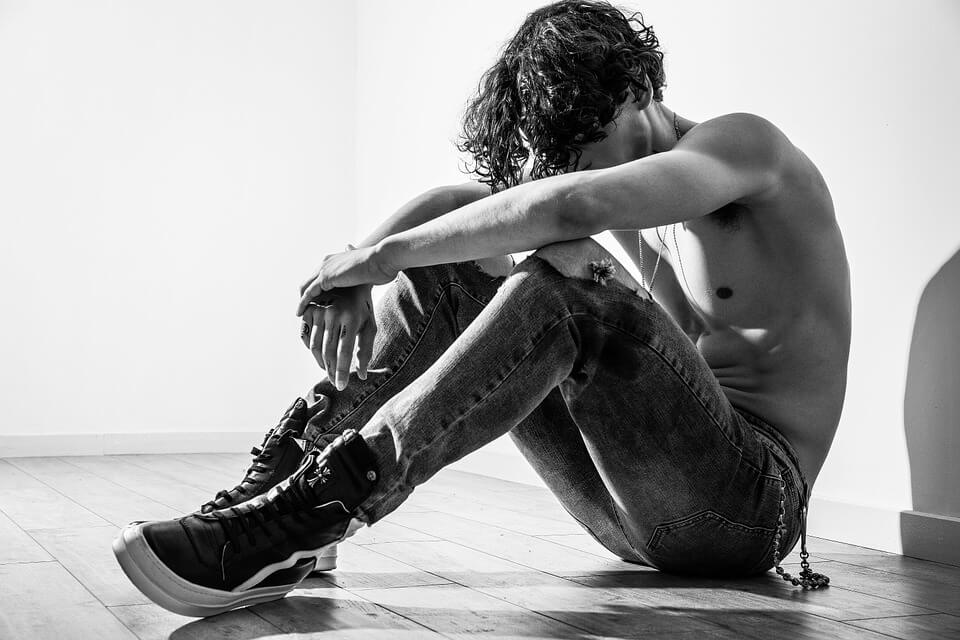
Experiment with Flat Light
Flat light is the antithesis of directional light. It produces little to no contrast between shadows and highlights and is often viewed as making pictures appear boring, lifeless, and dull. Yet, flat light can make for pretty impressive black-and-white art.
Flat light doesn’t have a large range of exposure, so you are forced to examine the elements of the scene and focus on one or more deep tones that will grab viewers’ attention. It hides details and skin imperfections, which is one of the reasons flat light is widely used in beauty and fashion photography.
Photographers will use flat light to create a near-perfect image and add contrast during post-processing using dodge and burn and other techniques.
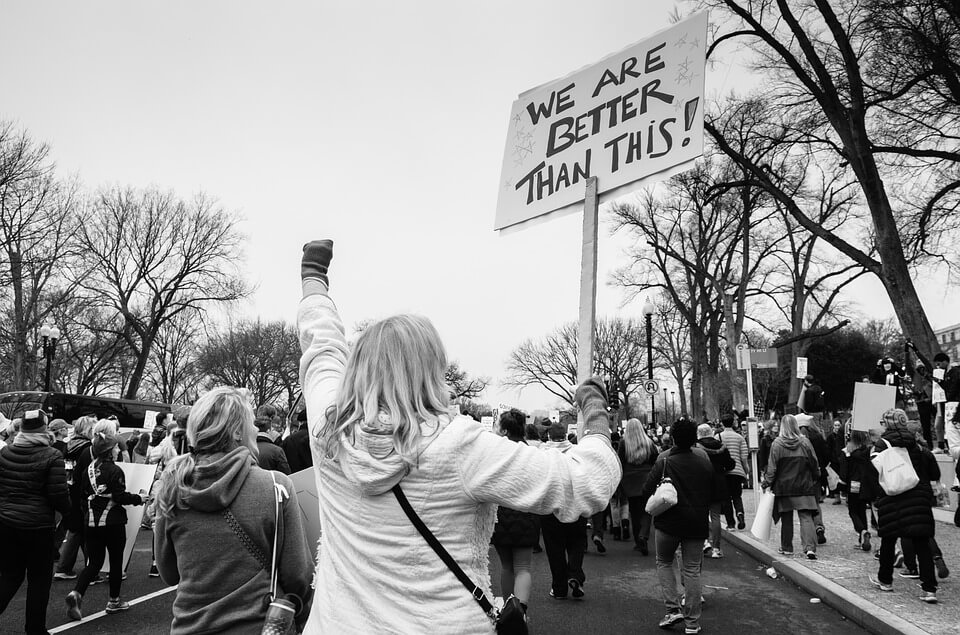
The Deeper the Black, the Brighter the White
One of the core principles of black-and-white art is deepening the dark hues so whites and lighter colors appear strikingly brighter. This is a play on human perception, where the sight of dark tones creates the impression that every other element in the scene has to be brighter.
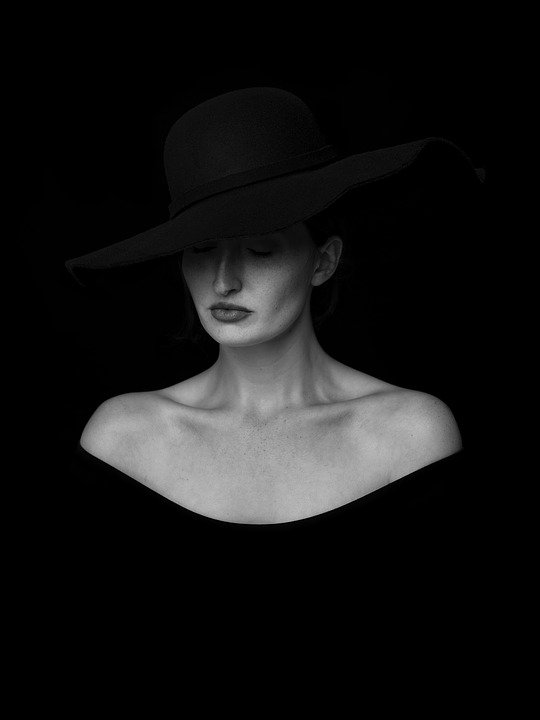
Have Some Clean Black and Clean White
Black and white photographs are typically composed of a range of gray tones. A strictly black-and-white photograph is an exception. Yet, absolute colors are an important starting point in creating a memorable photo.
Your entire photograph doesn’t have to be black and white only. However, you’ll want to include at least some elements in these colors. This helps anyone seeing the photo notice the image’s texture.
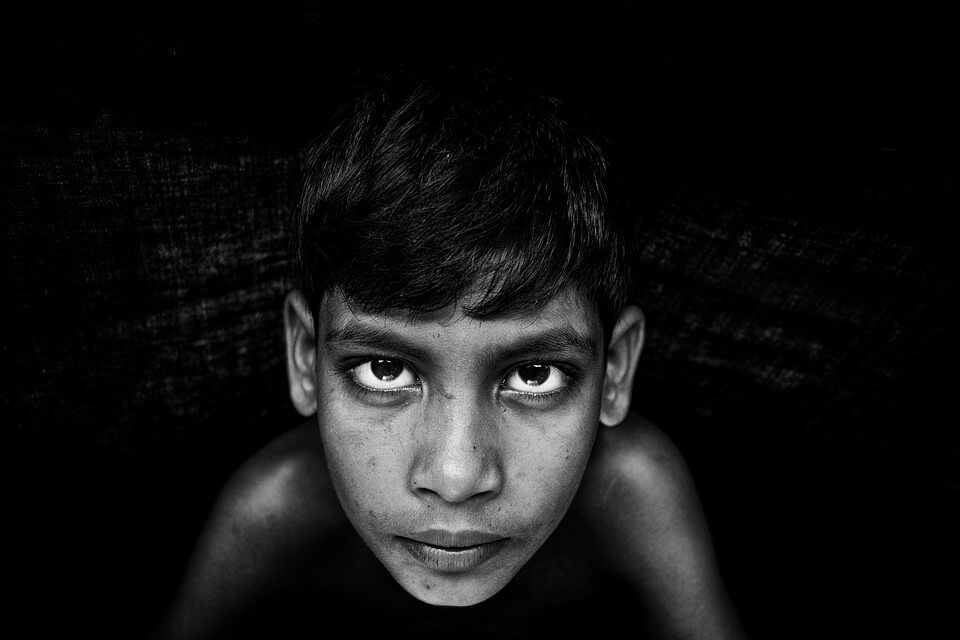
Use Exposure to Visualize Black and White
Consistently seeing and thinking in black and white is a nagging problem for photographers. It’s understandable since, after all, we are surrounded by color at nearly every moment of our lives.
There are a lot of inviting scenes around you that are good candidates for a great black-and-white picture. You’ll pick them out more if you visualize them in the context of underexposure. By underexposing, you can push the colors to black, white, and gray and lead the viewer’s eye through the frame.

Use Filters
You cannot realize your full potential in modern black-and-white photography without harnessing the power of filters. Use the polarizer, for instance, to darken skies and create a dramatic ambiance. You can also use a split grade for similar purposes.
Thinking in black and white is crucial to use filters successfully. It takes plenty of learning, practice, and failures to eventually get it right.
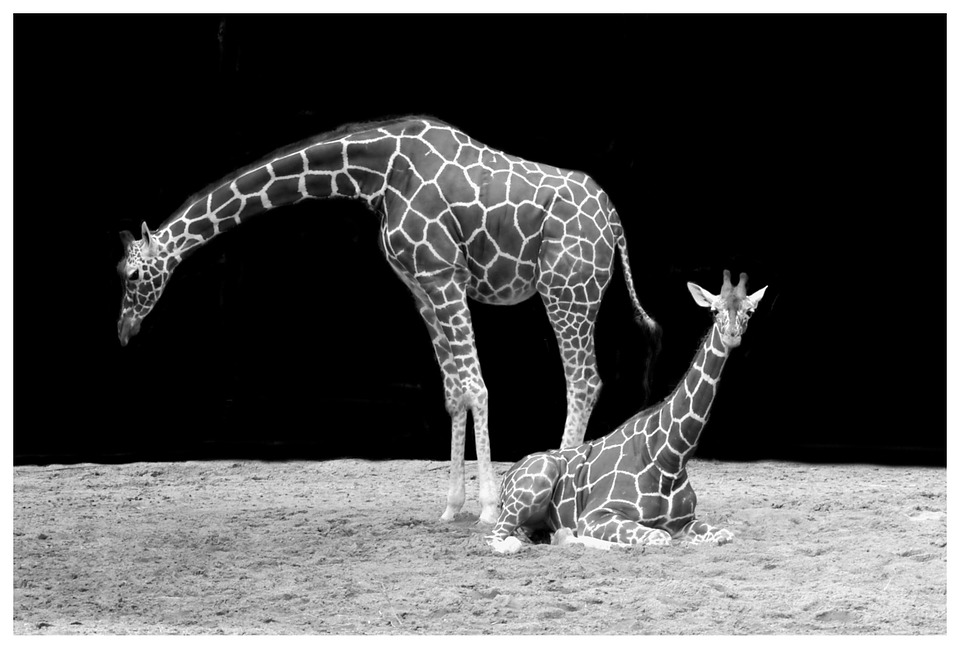
Curves and Levels
Powerful photos are an aggregation of small subtleties. Take your photograph through Adobe Photoshop where you can make small tweaks that would be impossible to do using your camera. The tiny changes may include darkening a specific cloud, making whites sharper, or changing the tone of a rock surface.
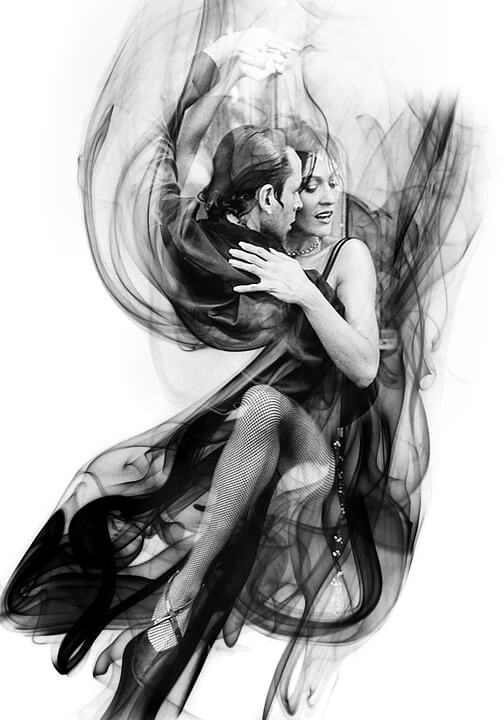
Choose a Suitable Subject
Some photos lend themselves to color but are not as eye-catching in black and white. For instance, sunset photos depend on the color of the sky to deliver the required impact. It’s, therefore, difficult to have an impressive black-and-white image of the sunset. Colorful flowers and birds are other examples where shooting in color is the most feasible option.
Black and white pictures have that old-fashioned feel, so they work best with rustic subjects such as old fences and rundown farm equipment. A portrait of an elderly person showing the creases and lines on their aging face has a greater visual impact in black and white than in color.
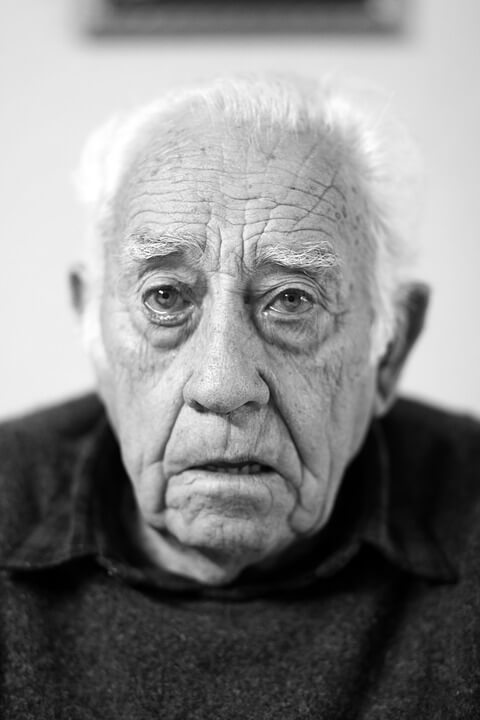
Shape and Form
When you remove color from an image, you can no longer use it to emphasize a certain scene or make it the center of attention. Removing color eliminates one of the more distracting aspects of a photograph. When looking for a great black-and-white shot, ignore the colors and set your sights on the shapes.
Where appropriate, arrange the objects to bring out the most outstanding attributes of the different subjects. Patterns are particularly interesting because of their orderly repetition. You can see patterns in a wide range of everyday scenes, including parking lots and rows of bushes.
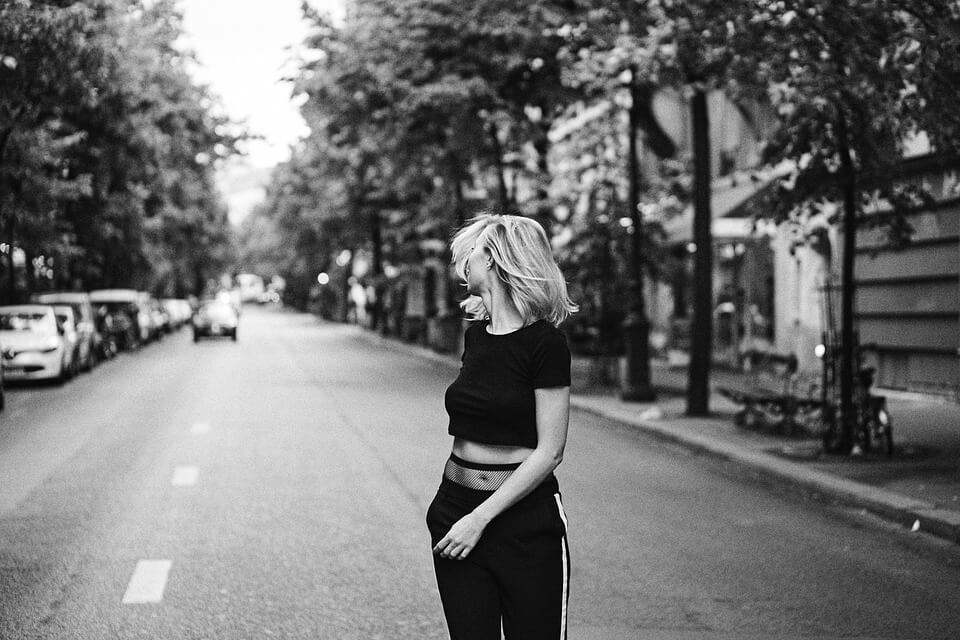
Contrast
In black-and-white photography, there is no color to bring out the sharp contrasts of separate elements in your photo. You have to rely on shades of grey to portray the distinctions. Use contrast to elevate your main subject by, for instance, placing a light-colored item in front of a dark background. This also allows you to add depth via a variety of shades and tones.
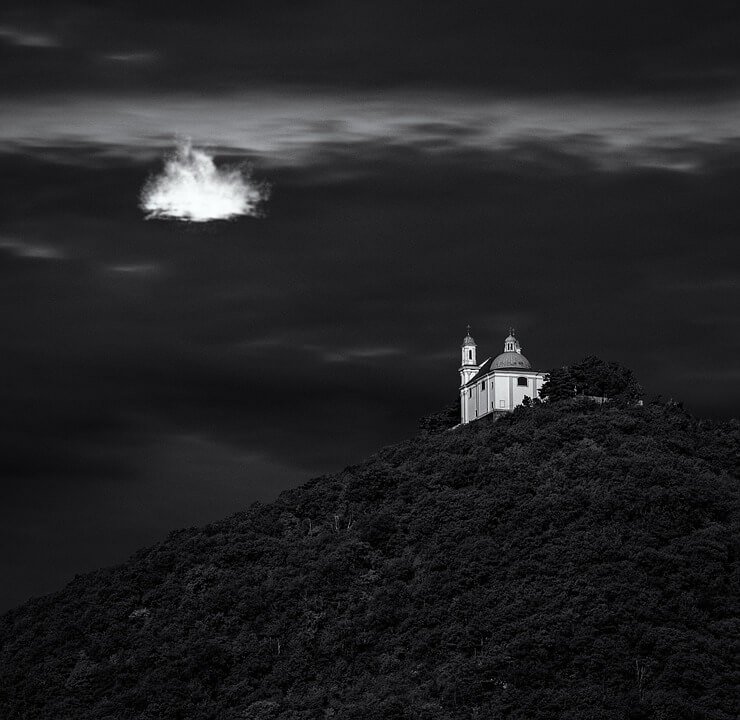
Beware of Dead Spaces
When composing your photo frame in readiness for the shot, steer clear of large areas of white or black. Viewers often perceive these parts of the photo as dead spaces that distract from the primary subject.
Black-and-white photos are most interesting when distinct textures and patterns dominate the image. Elements like trees, fences, roads, and people draw viewers into the photo and lead them to the subject matter.
One way to avoid dead spaces is to use the rule of thirds. Divide the photo frame into horizontal and vertical thirds. As opposed to having the desired subject at the center of the photo, place it at the intersection of any two of these dividing lines.

Shoot RAW
There will be times when, after shooting a photo in black and white, the final product doesn’t turn out as well as you thought it would. For some photos, color is essential. By shooting it in RAW, you can revert to color if the monochromatic image isn’t up to the expected standard.
Many of the best black-and-white photos are a result of editing RAW files containing full color. Even when set to RAW, many camera models have a monochrome simulation mode that will give you an early indication of how the final black-and-white image will look like. If you want to highlight the pristine beauty of the objects photographed and let viewers feel the atmosphere captured, you should try applying Lightroom black and white presets. There are lots of universal options, as well as those specifically designed for portraits, newborns, weddings, and other genres.
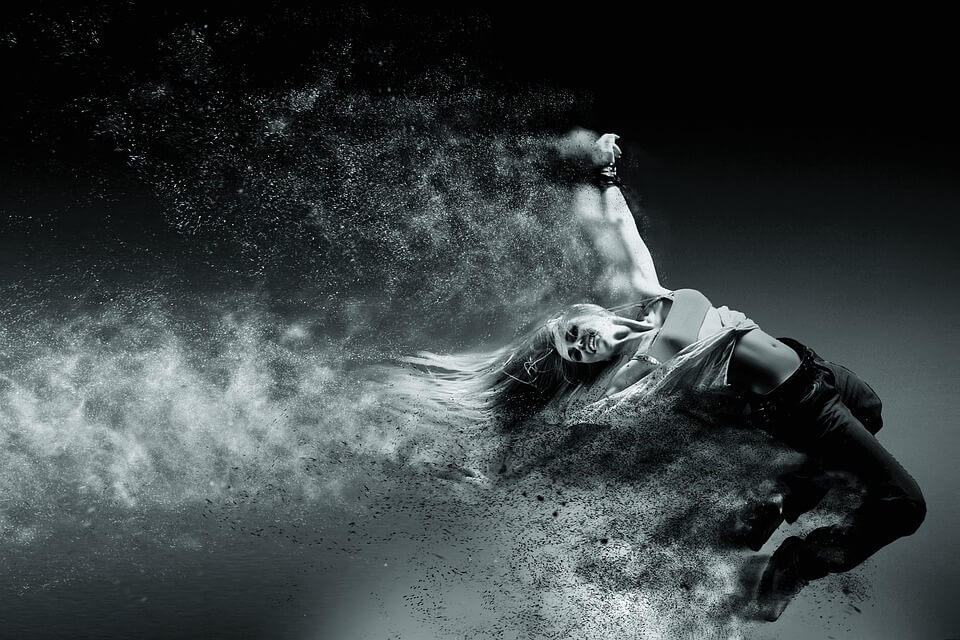
Silver Efex Pro
Part of Google’s Nik Collection photo editing suite, Silver Efex Pro is an Adobe Photoshop plugin that makes black and white images look breathtaking. In theory, you can use Photoshop to do all that Silver Efex Pro does; it’ll just be more difficult and manual.
When it was first introduced to the market, Silver Efex Pro was a fairly expensive program going for as much as $500. Google acquired it and slashed the price to $137 before eventually making it available for free. Since it doesn’t cost you anything, it’s always a good idea to tinker with your images in Silver Efex Pro if you intend to shoot professional black-and-white pictures.
The quality is striking to the extent that individuals who have used this plugin for a while can actually tell most times if Silver Efex Pro was employed in the production of black and white art. While Google ended support for it in May 2017, it’s still available.

Black and White Can Mitigate Bad Lighting
It’s not always possible to redeem a photo shot in bad lighting. Black and white, however, can give you an opportunity to do that. Color photos that may seem to be disasters due to terrible lighting can be saved to some extent using a polarizer. For example, you can eliminate the reflection on the leaves in your picture.
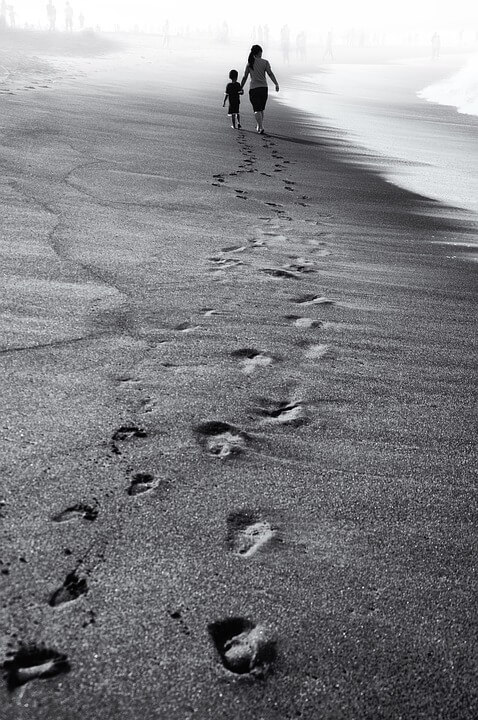
The More Colors, the Better the Black and White Picture
This is one mistake first-time black and white photographers often make. When you take a close-up shot of a penguin or a Dalmatian dog, the scarcity of colors may initially make it seem like an obvious candidate for the perfect black-and-white picture.
It is only when you reach for your editing tools that you realize it wasn’t a good idea in the first place. As a general rule, scenes that have just 2 or 3 colors likely won’t look good when converted to a black-and-white picture.
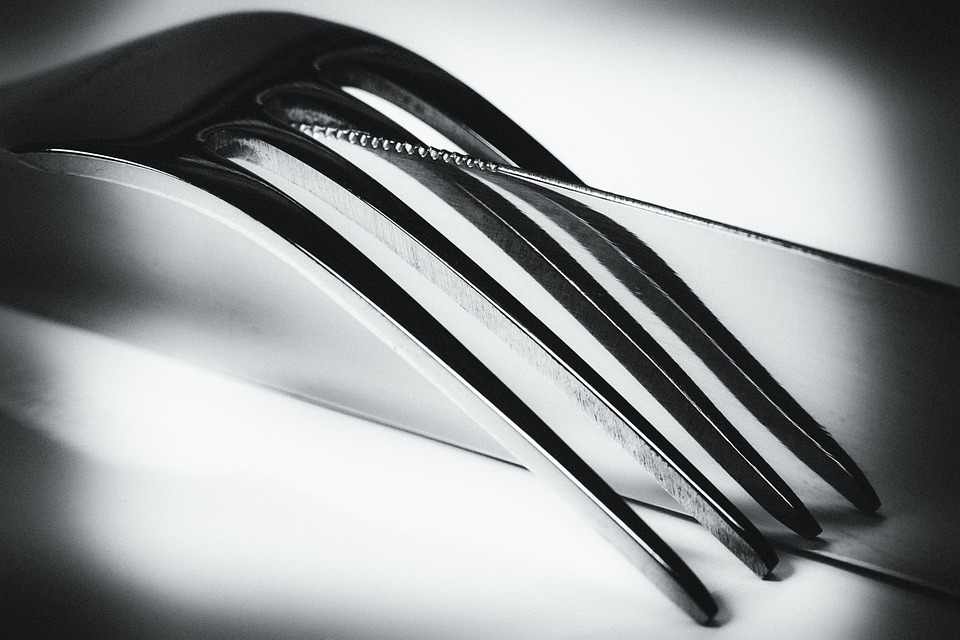
Connect with the Audience
Your photo should make the viewer feel something. One of the best ways to do that is to identify scenes with authentic, alive moments. Look for the intersection of composition, light, and a life micro-moment.
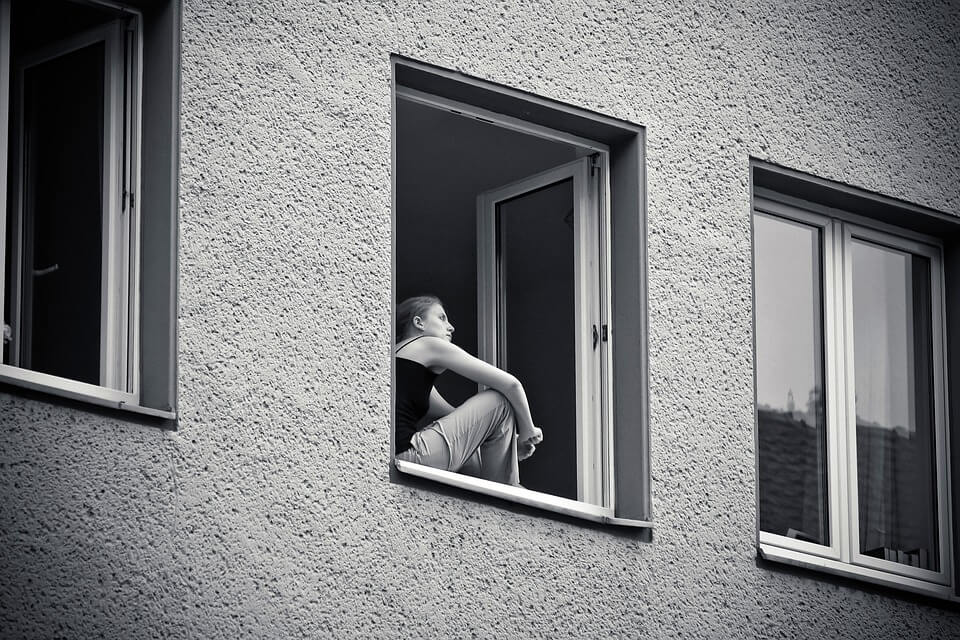
Find Your Space
Understanding the core principles of good photography is fundamental but shouldn’t stifle your creativity and style. Depending on the picture’s subject, you’ll likely develop an overarching technique for your black-and-white photos, which may vary slightly from one photo to the next.
Finding your style is never an overnight event. That wouldn’t be desirable even if it were possible. Taking your time allows you to progressively develop depth and character.
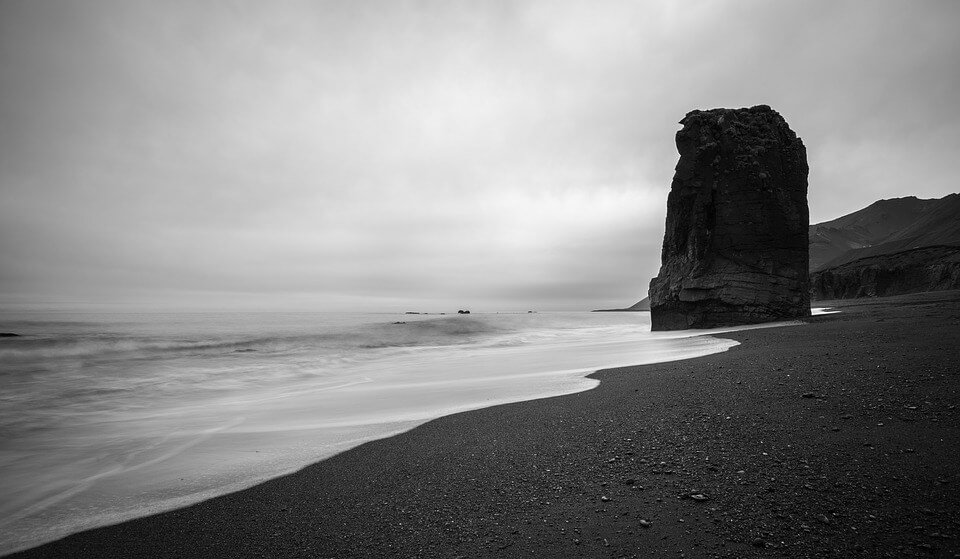
Practice, Practice, Practice
Even when you think you have developed a signature style, there is no end to learning as a black-and-white photographer. Be your own harshest critic. Shoot half a dozen images every day. Even if you are not a full-time photographer, this is something you can schedule into your day since each photo will probably require only a couple of seconds.
Ivan, the photographer working for Moose, explains: “I do commercial work in the photo studio equipped with top-notch Profoto light and a virtually infinite supply of the light modifiers. However, when in a studio, time is money. The whole team is waiting for you: the models, MUA, and post-production. You must be as efficient as possible. Therefore, sometimes, I rent light equipment to practice on my own. Also, I’ve purchased some cheap stuff, reflectors, and chroma key backdrops, and I spend a day once in a while trying to reproduce the results on cheap.”
Patiently learn the ropes as you work toward crafting a perfect image. Make slight changes to similar photos or frames. Don’t get too lost in one photo, though. Adhere to a timeline by, for example, giving yourself no more than 5 minutes to edit each photo. If need be, you can come back to it days or weeks later to see if there’s anything you may have missed.
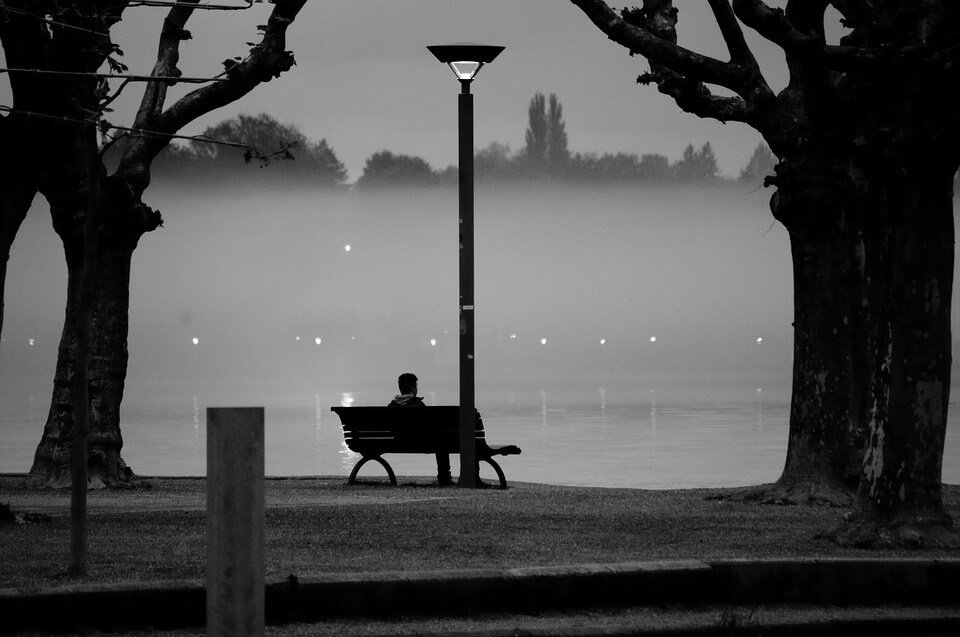
Conclusion
One thing you’ll notice about these 20 tips is the emphasis on a creative approach rather than camera techniques and settings. Black and white pictures require the same technical expertise as color photography. If you are already adept at taking color photos, you won’t have to change the way you use your camera significantly. What you’ll need to reevaluate is how you view the subject.
In black-and-white photography, success depends on paying close attention to tonality, lighting, composition, process, and equipment. Nevertheless, choosing the right gear and developing the necessary technique can help create unforgettable monochromatic images.
Study the work of seasoned black and white photographers. Thanks to social media, many of them share their images on major platforms, including Instagram, Facebook, and Flickr. Use hashtags such as #bwportraits, #bwphotography, and #blackandwhitephotos to see the work of multiple photographers. Some of them respond to your questions and are ready to explain the idea behind the picture.
You can also travel through time by visiting a local bookstore or library to discover the works of past photographers. One artist you may want to pay special attention to is Ansel Adams. His approach was so refined that he’s considered one of the best photographers ever. Other notable black-and-white picture artists are Arnold Newman, Duane Michals, Vivian Meier, David Bailey, Paolo Reversi, Hiroshi Sugimoto, and Jerry Uelsmann.
No magic workflow or template will work for every black-and-white image. Varying black-and-white depth and shades of gray mean you cannot apply the same technique to all black-and-white photographs. How you treat landscape photos isn’t the same as how you’ll handle landscape pictures.
Whether you are a professional photographer or a hobbyist, black-and-white pictures are artistic and therapeutic and take you to new depths beyond the decorative role of color.
Author: Stephen Wachitа
Review the basics of visual storytelling, read how to create catchy title images for your content, check the big lists of resources of getting photo content legally and free photo editing software



